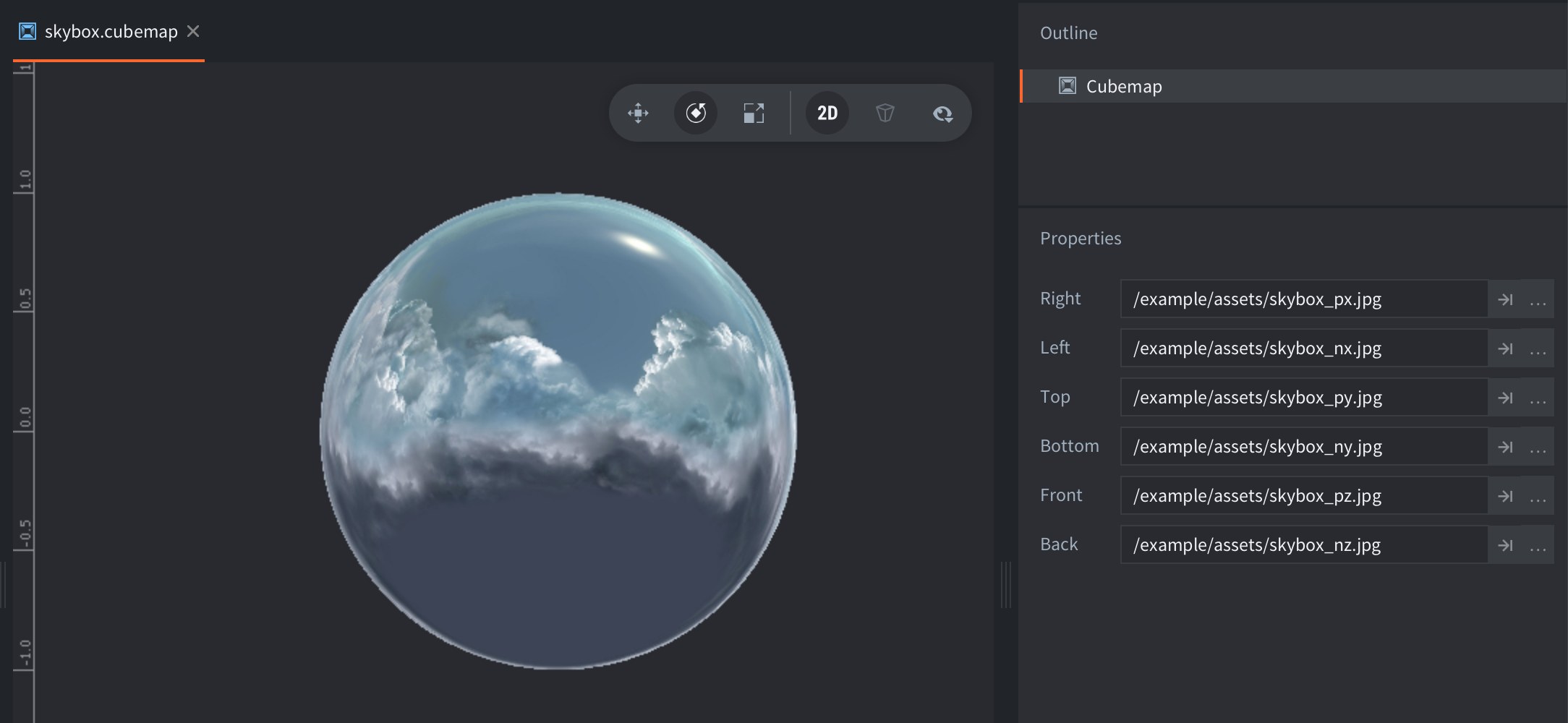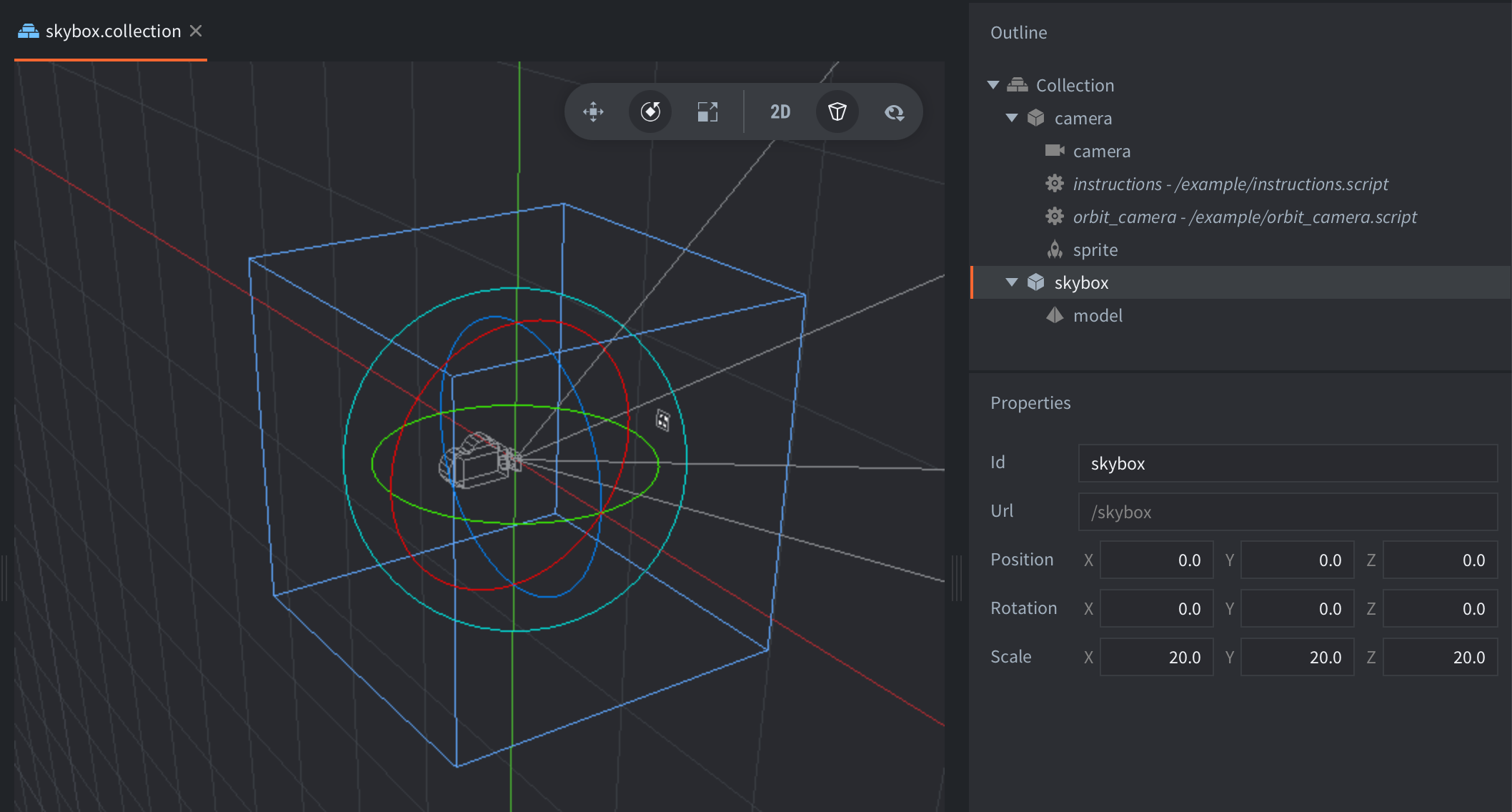Skybox
Setup
This example shows how to create a skybox. A skybox is a technique that makes the scene look bigger and more impressive by wrapping the viewer with a texture that goes around the camera 360 degrees.
An in-depth explanation of skybox rendering can be found in Tutorial 25 of OGL Dev.
One of the key components of a skybox is the cubemap texture. A cubemap is a texture that contains 6 individual 2D textures that each form one side of a cube: a textured cube.

The cubemap is projected on a sphere or a cube positioned in such a way that the camera and other objects are placed inside the cubemap:

Skybox texture by Jockum Skoglund aka hipshot. Free to use.
Scripts
skybox.fp
#version 140
in mediump vec3 var_texcoord0;
uniform samplerCube cubemap;
void main()
{
gl_FragColor = texture(cubemap, var_texcoord0);
}skybox.vp
#version 140
uniform vs_uniforms
{
uniform mediump mat4 view_proj;
uniform mediump mat4 world;
};
in highp vec3 position;
out mediump vec3 var_texcoord0;
void main()
{
/*
* Transform the position vector using the world view projection matrix
* and override the Z component with the W component. After the vertex
* shader is complete the rasterizer takes gl_Position vector and performs
* perspective divide (division by W) in order to complete the projection.
* When we set Z to W we guarantee that the final Z value of the position
* will be 1.0. This Z value is always mapped to the far Z. This means that
* the skybox will always fail the depth test against the other models in
* the scene. That way the skybox will only take up the background left
* between the models and everything else will be infront of it.
*/
mat4 wvp = world * view_proj;
vec4 wvp_pos = wvp * vec4(position, 1.0);
gl_Position = wvp_pos.xyww;
/*
* Use the original position in object space as the 3D texture coordinate.
* This makes sense because the way sampling from the cubemap works is by
* shooting a vector from the origin through a point in the box or sphere.
* So the position of the point actually becomes the texture coordinate.
* The vertex shader passes the object space coordinate of each vertex as
* the texture coordinate and it gets interpolated by the rasterizer for
* each pixel. This gives us the position of the pixel which we can use for
* sampling.
*/
var_texcoord0 = position;
}